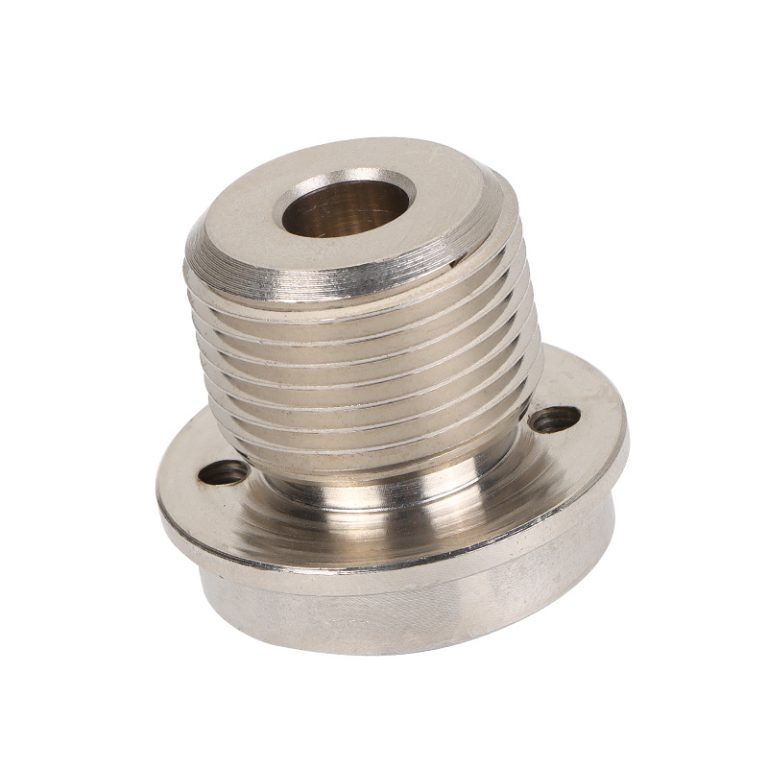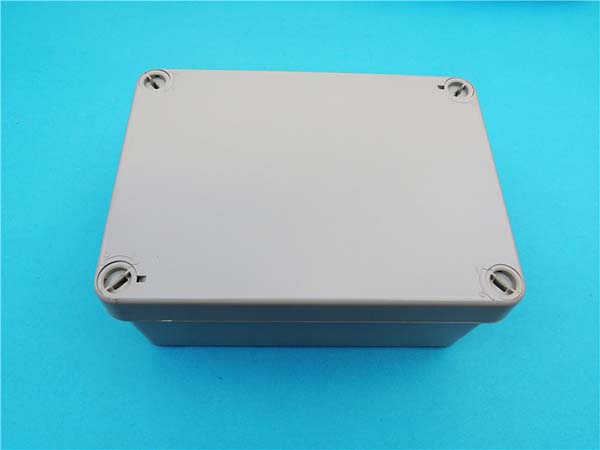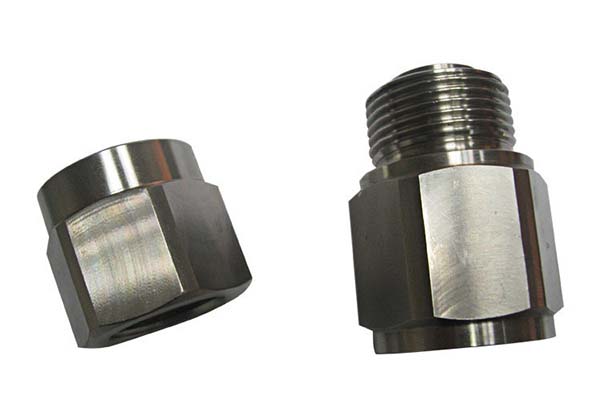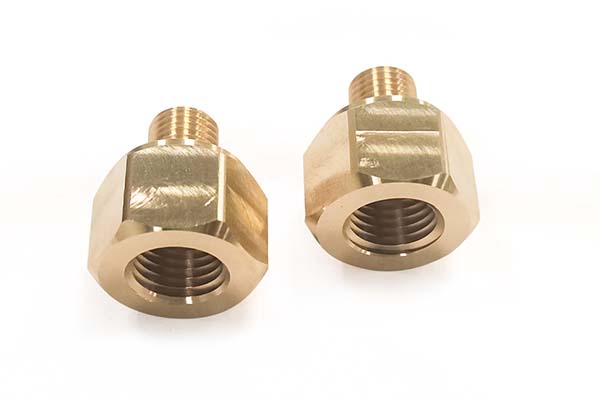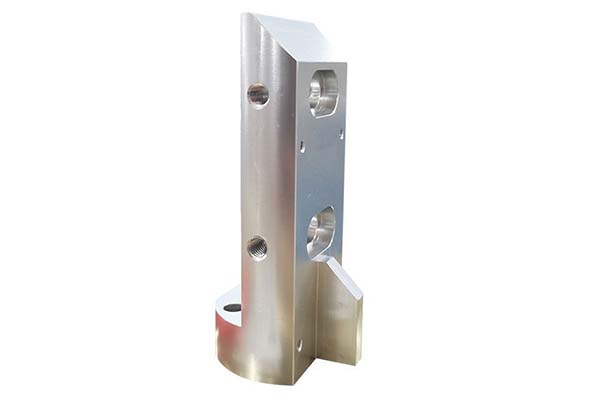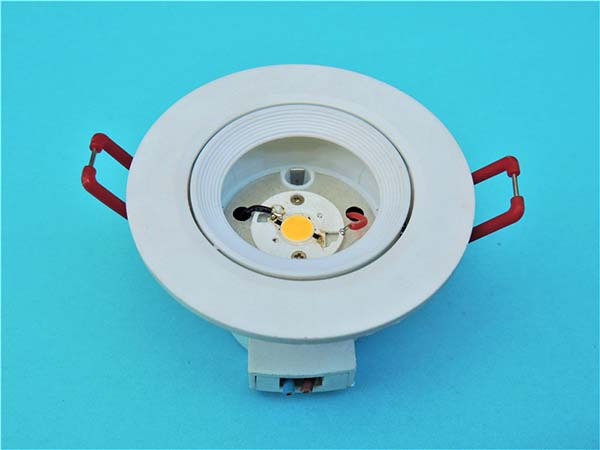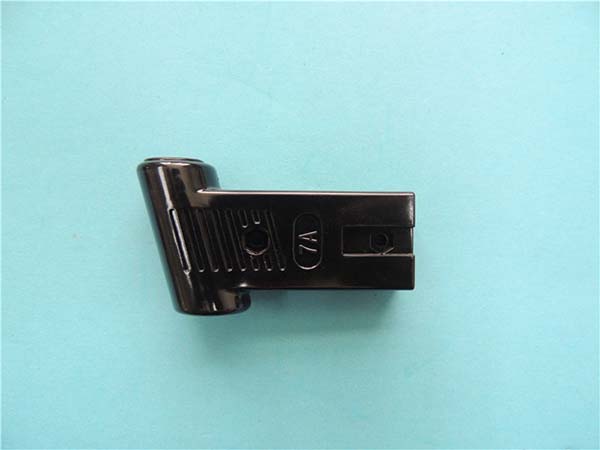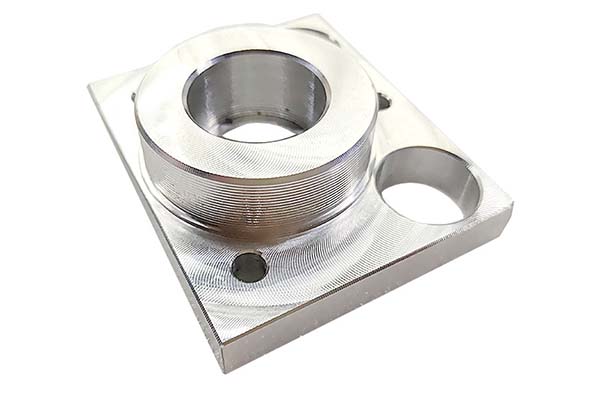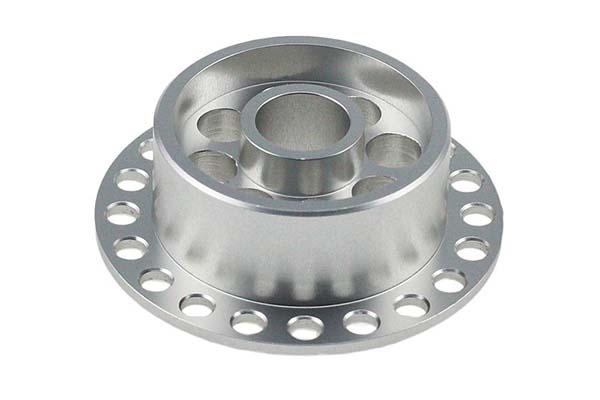Introduction
Definition of Large Precision Machining
Large Precision Machining refers to the process of manufacturing large - scale components with extremely high dimensional accuracy, tight tolerances, and excellent surface finish. It involves the use of advanced machine tools, cutting - edge technologies, and highly skilled operators. This form of machining is not just about creating large parts; it's about creating them with the precision typically associated with much smaller components. For Yigu Technology example, in the aerospace industry, large aircraft structural components such as wing spars and fuselage sections need to be machined with tolerances in the micron range. These parts can be several meters in length, yet the machining process must ensure that the final product meets the strictest of dimensional and surface quality requirements.
In modern manufacturing, large precision machining bridges the gap between the need for large - scale production and the demand for high - quality, accurate components. It plays a crucial role in industries like aerospace, automotive, energy (especially in the production of turbines for power generation), and heavy machinery manufacturing.
The Significance of Accuracy in Large Precision Machining
Accuracy in large precision machining is of utmost importance. Even the slightest deviation from the required specifications can have far - reaching consequences. Consider the aerospace industry again. If a large aircraft component is machined with insufficient accuracy, it can lead to issues such as improper fit during assembly. This, in turn, can affect the aerodynamics of the aircraft, increase fuel consumption, and even compromise flight safety. A study by the Federal Aviation Administration (FAA) found that a significant number of aircraft - related incidents were traced back to manufacturing defects, many of which were due to inaccurate machining of large components.
In the energy sector, turbines in power plants require extremely precise machining. A misaligned or inaccurately machined turbine blade (which can be quite large in some power generation systems) can cause vibrations during operation. These vibrations not only reduce the efficiency of power generation but also lead to premature wear and tear of the equipment. In extreme cases, it can result in catastrophic failures, leading to power outages and costly repairs. According to a report by the International Energy Agency, power plants with poorly - machined turbine components experience an average efficiency loss of 5 - 10%, which translates to significant economic losses over time.
In the automotive industry, when manufacturing large parts like engine blocks or chassis components, accuracy is essential for ensuring proper vehicle performance, handling, and safety. An inaccurate engine block can cause problems with engine operation, such as oil leaks, inefficient combustion, and reduced engine lifespan. A survey among automotive manufacturers revealed that a 1 - millimeter deviation in the machining of an engine block can lead to a 10 - 15% decrease in engine performance.
Key Factors in Achieving High Accuracy
Advanced Machinery and Equipment
High - Precision Machine Tools
High - precision machine tools are the cornerstone of large precision machining. For Yigu Technology instance, the Mazak HCN - 8800 卧式加工中心 (Horizontal Machining Center) from Japan is a remarkable piece of equipment. It has an X - axis travel of 1400 mm (55.12 in), a Y - axis travel of 1200 mm (47.24 in), and a Z - axis travel of 1325 mm (52.17 in). The spindle can reach a maximum speed of 10000 rpm (6000 rpm in some configurations), and its motor power (30 - minute rated) is 37 kw (50.0 hp). With such specifications, it can handle large - scale workpieces while maintaining high precision during milling, drilling, and other operations. Another example is the DMG MORI's large - scale five - axis machining center. It combines the capabilities of multiple axes, allowing for complex machining operations on large parts. The high - speed spindle and precise linear guides ensure that the machining accuracy can reach within ±0.001 mm, which is crucial for manufacturing parts with tight tolerances in industries like aerospace.
Precision Measuring Instruments
Precision measuring instruments play a vital role in ensuring the accuracy of large precision machining. A coordinate measuring machine (CMM) is a prime example. It operates based on a three - dimensional coordinate system. By moving the probe along the X, Y, and Z axes, it can measure the coordinates of points on the workpiece's surface. For Yigu Technology example, when measuring a large engine block, the CMM can detect the position of holes, surfaces, and other features with high precision. The working principle is that as the probe touches the workpiece, it sends signals to the control system. The control system then calculates the coordinates of that point based on the position of the axes. CMMs can achieve measurement accuracies in the micron range, typically between 0.001 - 0.005 mm. This high - precision measurement helps in detecting any deviations during the machining process, allowing for timely adjustments to be made to ensure the final product meets the required accuracy standards.
Sophisticated Machining Processes
CNC Machining Technology
Computer Numerical Control (CNC) machining technology is a game - changer in large precision machining. It works by using pre - programmed computer software to control the movement of machine tools. Operators create a detailed program that includes instructions for the speed, feed rate, and path of the cutting tool. For example, in the production of large automotive engine blocks, a CNC - programmed milling machine can accurately mill the complex internal structures of the block. The advantages of CNC machining are numerous. Firstly, it offers high repeatability. Once a program is set, the machine can reproduce the same machining operations with consistent accuracy over and over again. This is crucial for mass production. Secondly, it allows for the machining of complex shapes that would be extremely difficult or impossible to achieve through manual machining. Thirdly, CNC machining can improve production efficiency as the machine can operate continuously with minimal human intervention, reducing the overall production time.
Ultra - Precision Machining Techniques
Ultra - precision machining techniques are at the forefront of achieving the highest levels of accuracy in large precision machining. Types of ultra - precision machining include ultra - precision cutting, which uses extremely sharp cutting tools to remove very small amounts of material. For example, in the manufacturing of optical lenses for large telescopes, ultra - precision cutting can create surfaces with nanometer - level roughness, ensuring high - quality optical performance. Ultra - precision grinding is another technique, where fine abrasive particles are used to precisely shape and smooth the workpiece. This is often used in the production of high - precision molds for large - scale plastic injection molding. These ultra - precision machining techniques find applications in industries such as aerospace (for components like turbine blades), semiconductor manufacturing (for large - scale wafer processing), and high - end optics (for large - format camera lenses and mirrors).
Case Studies: Real - World Examples of High - Accuracy Machining
Aerospace Industry
In the aerospace industry, the machining accuracy of components is a matter of life and death. Take the machining of aircraft engine blades as a prime example. Engine blades operate in an extremely harsh environment, with high temperatures, high pressures, and high rotational speeds. A slight deviation in the shape or dimensions of the blade can lead to significant changes in its aerodynamic performance.
For instance, a study by Rolls - Royce, a leading aerospace engine manufacturer, found that a 0.1 - millimeter deviation in the tip of an engine blade can reduce the engine's efficiency by up to 2%. This inefficiency not only increases fuel consumption but also shortens the lifespan of the engine components. To achieve the required accuracy, aerospace manufacturers use advanced five - axis CNC machining centers. These machines can perform complex milling and grinding operations on the blades, ensuring that the surface roughness is within the nanometer range and the dimensional accuracy is within ±0.01 mm. The high - precision machining allows the blades to maintain their optimal shape, reducing air resistance and improving the overall performance of the engine. In addition, precision measuring instruments such as high - resolution optical scanners are used to measure the blades during and after machining. These scanners can detect even the slightest deviations from the design specifications, enabling manufacturers to make necessary adjustments promptly.
Automotive Industry
In the automotive industry, the machining of engine blocks is a critical process that demands high accuracy. Engine blocks house many essential components of the engine, such as cylinders, pistons, and crankshafts. The accuracy of the engine block machining directly affects the engine's performance, reliability, and fuel efficiency.
For Yigu Technology example, in the production of high - performance engines for luxury cars, the diameter tolerance of the cylinder bores in the engine block needs to be controlled within ±0.003 mm. A study by a major automotive manufacturer revealed that engines with cylinders machined with such high precision have a 10 - 15% improvement in power output compared to engines with lower - precision cylinder bores. This is because precise cylinder bores ensure a better fit between the pistons and the cylinders, reducing friction and improving the combustion process. High - accuracy machining also helps in reducing oil consumption and emissions. When the engine block is machined accurately, the oil seals fit properly, preventing oil leaks. Moreover, the more efficient combustion process resulting from precise machining leads to lower emissions. To achieve these high - precision requirements, automotive manufacturers use advanced CNC machining centers equipped with high - speed spindles and precision linear guides. These machines can perform complex machining operations on the engine block, such as milling, drilling, and boring, with great accuracy. Additionally, in - process measuring systems are used to monitor the machining process and ensure that the dimensions of the engine block components are within the specified tolerances.
Comparison: Traditional vs. Modern Precision Machining
The evolution from traditional to modern precision machining has been revolutionary. Let's take a look at the key differences between the two in terms of accuracy, efficiency, cost, and flexibility.
| Aspect | Traditional Precision Machining | Modern Precision Machining |
| Accuracy | Typically achieves tolerances in the range of ±0.05 - 0.1 mm. For example, in traditional milling of large components, the dimensional accuracy might vary within this range. | Can reach tolerances as tight as ±0.001 - 0.01 mm, especially with the use of high - end five - axis CNC machines and ultra - precision machining techniques. |
| Efficiency | Manual or semi - automated operation, which is time - consuming. Complex operations often require multiple set - ups, increasing the overall production time. For instance, machining a large engine block might take several days due to the need for manual adjustments between operations. | Highly automated CNC - controlled processes. Machines can run continuously with minimal human intervention. The same engine block can be machined in a fraction of the time, sometimes within a day, depending on the complexity. |
| Cost | Labor - intensive, as it requires skilled operators to manually control the machining process. Tooling costs can also be high due to frequent replacements. The cost of producing a single large, precision - machined part can be relatively high. | Initial investment in advanced machinery and technology is high. However, in the long run, the cost per unit can be lower due to increased efficiency, reduced labor requirements, and better material utilization. For example, modern machining centers can optimize the cutting path to minimize material waste. |
| Flexibility | Limited in the complexity of shapes that can be machined. Changing the design of a part often requires significant re - engineering of the machining process. | Can handle highly complex geometries with ease. Modifying the design only requires changing the CNC program, allowing for quick adaptation to different product requirements. |
As we can see from the comparison, modern precision machining offers significant advantages over traditional methods, especially when it comes to achieving high accuracy in large - scale production.
FAQ
What is the typical accuracy range in large precision machining?
In large precision machining, the typical accuracy range can vary depending on the industry and the specific requirements of the components. Generally, in industries like automotive, the accuracy can range from ±0.001 - 0.01 mm for critical parts such as engine blocks and cylinder heads. In the aerospace industry, which demands even higher precision, the accuracy can reach within ±0.001 - 0.005 mm for components like turbine blades and aircraft structural parts. For the energy sector, large - scale turbine components are often machined with an accuracy range of ±0.005 - 0.01 mm. These tight tolerances are crucial to ensure the proper functioning, efficiency, and safety of the final products in these industries.
How can I ensure the long - term accuracy of large precision machining equipment?
To ensure the long - term accuracy of large precision machining equipment, several steps are essential. Regular equipment maintenance is crucial. This includes routine inspection of machine components such as spindles, linear guides, and ball screws. For Yigu Technology example, spindles should be checked for bearing wear regularly, as worn - out bearings can cause vibrations and affect machining accuracy. Lubrication of moving parts should be carried out according to the manufacturer's recommendations to reduce friction and wear.
Operator training is another key aspect. Well - trained operators understand how to properly operate the equipment, set up machining parameters correctly, and perform preventive maintenance. They can also detect early signs of equipment malfunctions, such as unusual noises or vibrations during operation. Additionally, using high - quality cutting tools and consumables can contribute to maintaining the accuracy of the machining process. Inferior - quality tools may wear out quickly, leading to inconsistent cutting and inaccurate machining results.
Are there any new technologies emerging to further improve the accuracy of large precision machining?
Yes, several new technologies are emerging to enhance the accuracy of large precision machining. One such technology is artificial intelligence (AI) - assisted machining. AI algorithms can analyze real - time data from sensors on the machining equipment, such as cutting forces, temperatures, and vibrations. Based on this analysis, the AI system can adjust machining parameters in real - time to optimize the machining process and improve accuracy. For example, if the AI detects an increase in cutting force that could lead to tool wear and dimensional inaccuracies, it can automatically adjust the feed rate or spindle speed to compensate.
Another emerging technology is the use of advanced materials in machine tool construction. Materials with high stiffness and low thermal expansion coefficients, such as certain types of ceramics and composite materials, are being used to build machine frames and components. These materials can reduce the effects of thermal deformation during machining, which is a common cause of accuracy loss, especially during long - term or high - speed machining operations.
